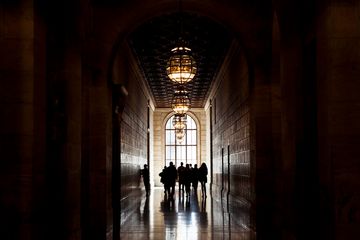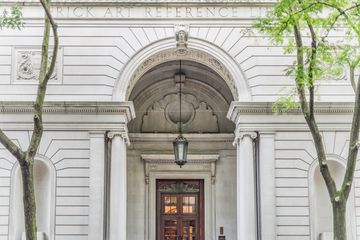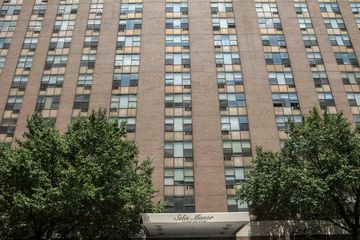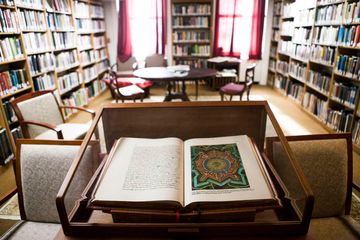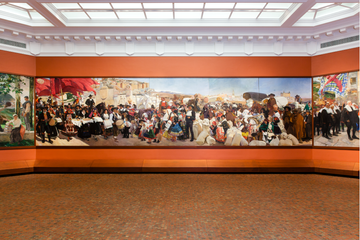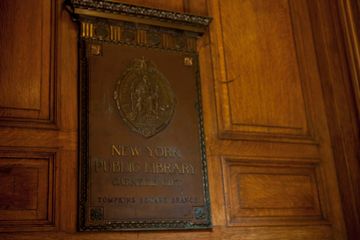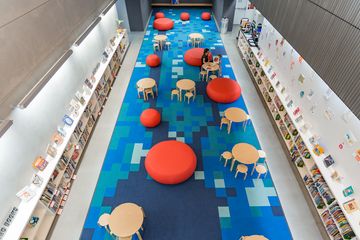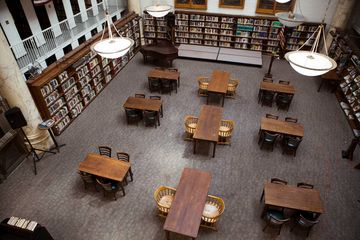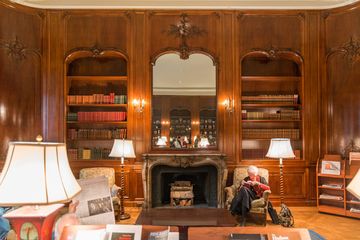When the Donnell Library, known for its collection of non-English works, teen literature, and Winnie the Pooh Dolls, closed in 2008, the neighborhood mourned its passing. Luckily, in its place, 53rd Street has received an innovative, welcoming new public library run by some of the kindest, most helpful people I have encountered on the side streets. When I visited the library shortly after it had opened in the summer of 2016, it was Olympic season, and the large, central amphitheater with staircase seating was live-streaming the games. Not only were visitors encouraged to borrow headphones if they wished to listen to whatever was playing, but those sitting on the stairs were allowed to have food, a rare occurrence in a public library. When I spoke to Genoveve, the head librarian, she told me that she was working on getting a Criterion films license for the library so that they could offer showings from a diverse, high-quality archive of films. As it is, Kevin, a library employee, informed me that the screen is “never black. ” Kevin and Genoveve were joined by Lauren, who is in charge of children’s programming. The trio showed me into a community room with comforting orange, puffy walls, which I learned are very adaptable for various acoustics. The room can be broken up into two smaller spaces, separated by a wall that doubles as a dry erase board. The group then walked me around the main floor, where the bulk of the collection is kept. The 53rd Street team has made excellent use of the space that they have been given. Each nook and cranny either has a bookshelf or a place for people to sit. There are outlets galore and many places where people can comfortably work on a laptop. Genoveve jokingly called the back laptop bar the “cocktail area” because of its sleek design. The library was built with modern technology in mind, but Genoveve assured me that there is a good balance of physical books to electronic materials, since, after all, “People still really love their books. ” I was curious if certain age groups prefer electronic sources to actual books, but I learned that there is an even mix of people who use both – including my three hosts, who described when they like to read stories on e-readers vs. when they like to turn pages. Though the space is very technical and Genoveve hopes to host coding events, International Games Day, and tech meet-ups in the future, the library is known as much for the arts as for its technological resources. “Film, Arts, and Music” is how Genoveve described the library’s programming focus. While it is a no-brainer to feature arts events, since the library is across the street from the MoMA (and has already begun collaborating with the museum), 53rd Street also reaches out to other sources in the arts. For instance, in September, the library hosted an event in honor of Roald Dahl during which the cast of Matilda on Broadway showed up for a photo opportunity. Genoveve and Kevin let me know that they are also planning on inviting opera companies, one-man/woman shows, and chamber music ensembles to perform at the library. I was curious to know who the library’s regular attendees are, considering that the building is located in the middle of midtown. Genoveve shared that there were a lot of residential locals: “I didn’t know there were so many families that lived in the neighborhood! ” she exclaimed. In addition to locals, the library attracts commuters, tourists, and even other librarians. “We’ve become a popular place for the internal department, ” she said, smiling. The crowning jewel of the library is the children’s room, which is cleverly tucked below the bleachers facing the giant screen. I was delighted when Lauren pointed out that the rug that covers the room is a cubic rendering of the island of Manhattan. The rug was provided by TEN, the architect that designed the whole library. Lauren is pleased with how much TEN listened to the librarians when designing the children’s room, especially when it comes to the sink in the corner. She explained that having a sink makes it much easier to plan activities and crafts with the children, citing a recent shaving cream project as an example. There are children’s programs everyday, as well as teen events in the space just outside the kid’s room. “We have a really robust story-time schedule, ” Lauren said proudly. No matter what room we entered, I was blown away by the friendly greetings and bright, cheery smiles that I received from the staff. When I mentioned this to Genoveve, she nodded and admitted, “We have received a lot of compliments about the team being friendly. ” She went on to say that when she was approached about being head librarian, she immediately started hiring the “cream of the crop. ” It also helped, Kevin added, that the staff “worked together for a month before the library even opened. ” Lauren chimed in: “Librarians exist because we’re there to help people. Our natural inclination, whether we’re friendly or shy, is to help. ” Genoveve nodded and told me that she wants everyone who walks in to feel comfortable and at-home. “This is New York’s Living Room. ”
